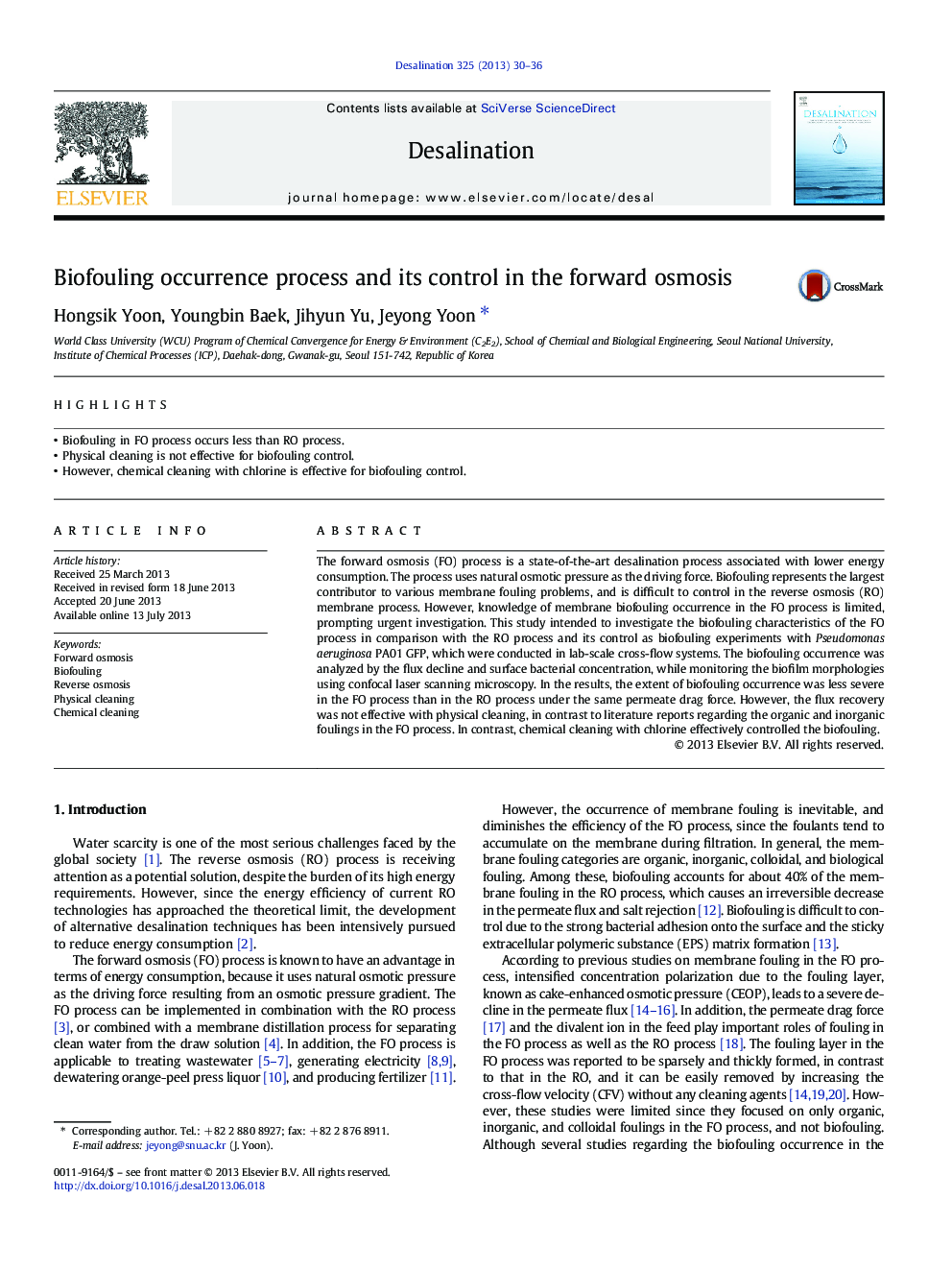| Article ID | Journal | Published Year | Pages | File Type |
|---|---|---|---|---|
| 7008595 | Desalination | 2013 | 7 Pages |
Abstract
The forward osmosis (FO) process is a state-of-the-art desalination process associated with lower energy consumption. The process uses natural osmotic pressure as the driving force. Biofouling represents the largest contributor to various membrane fouling problems, and is difficult to control in the reverse osmosis (RO) membrane process. However, knowledge of membrane biofouling occurrence in the FO process is limited, prompting urgent investigation. This study intended to investigate the biofouling characteristics of the FO process in comparison with the RO process and its control as biofouling experiments with Pseudomonas aeruginosa PA01 GFP, which were conducted in lab-scale cross-flow systems. The biofouling occurrence was analyzed by the flux decline and surface bacterial concentration, while monitoring the biofilm morphologies using confocal laser scanning microscopy. In the results, the extent of biofouling occurrence was less severe in the FO process than in the RO process under the same permeate drag force. However, the flux recovery was not effective with physical cleaning, in contrast to literature reports regarding the organic and inorganic foulings in the FO process. In contrast, chemical cleaning with chlorine effectively controlled the biofouling.
Related Topics
Physical Sciences and Engineering
Chemical Engineering
Filtration and Separation
Authors
Hongsik Yoon, Youngbin Baek, Jihyun Yu, Jeyong Yoon,
